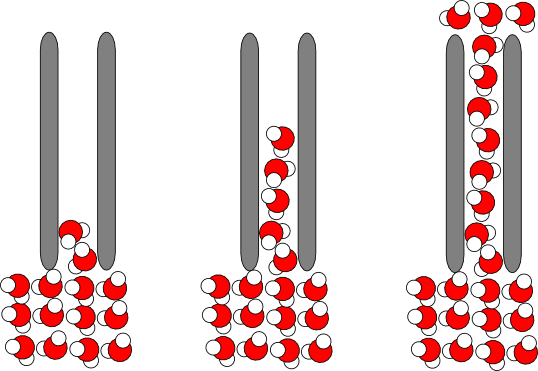This is an interesting problem. I haven't heard of the specific application before, but I think I can explain what is going on.
Why does the water seep through the bag? Is it because the water molecules have a Maxwell speed distribution and only the fastest molecules seep out?
It is probably not closely related to the velocity distribution of the molecules, but rather to a "wicking" effect due to capillary action. Here's a picture:

In general terms, the water molecules are attracted to the fibers of the canvas (which are mostly made of cellulose and are hydrophilic) almost as much as they are attracted to each other. As water randomly crawls along the surface of a cellulose fiber, it drags other water molecules along with it. In confined spaces, this effect can pull a large volume of water out of a container (think about a dry sponge, or a dry paper towel dipped into water).
What mechanism is occurring for heat being removed from the water to evaporate the water on the bag’s surface? Doesn't radiation also contribute here?
Once water gets to the surface, the velocity distribution plays a much greater role. The key misconception in your question has to do with the direction of heat transfer. When a water molecule evaporates, it doesn't lose heat - it gains heat. Evaporation is an endothermic process. What happens is some of the water molecules randomly gain enough kinetic energy from collisions with other water molecules and from the atmosphere (and also from radiation) to break free of the forces holding them together.

As that kinetic energy is removed from the system, the water molecules in the bag give up some of their kinetic energy, resulting in a small loss of heat. As @Hagadol said, this is the same reason that sweating "works."
Why does moving increases the cooling effect faster?
This is (to me) the really interesting part. For a system of liquid molecules in equilibrium with a gas (like water and air), some of the liquid molecules will always have enough kinetic energy to break free from the surface. If they are in a closed container, they will bounce around for a while until they find their way back into the liquid. At some point, the rate of molecules entering the liquid equals the rate of molecules leaving the liquid, and you arrive at what is called a dynamic equilibrium:

What happens if the container isn't closed, and we remove the water vapor as soon as it is formed?

Well, now the water vapor doesn't find it's way back into the liquid - when it's gone, it's gone. And so the overall evaporation rate increases, and the water cools faster. If air is flowing over the surface of the water, the rate will increase further.
Taken together, these explain lots of other things as well:
- Sweating is more effective when it is not humid ("dry" vs. "wet" heat)
- Water evaporates more slowly in cool, dark places where there is little air movement (cellars and caves, for example)
- Water evaporates quickly when the sun is shining and it is not very humid.
- Wind causes water to evaporate more quickly, making the weather feel colder (the "wind chill" effect, or the reason blowing across your skin makes it feel chilly)
- A can of compressed liquified gas will cool as the gas is vented (gas canisters, or electronics "dusters")
- Wet clothes make you feel colder (your body heat goes into evaporating the water)
- Heavy (dry) clothes make you feel warmer (your sweat doesn't evaporate)
- Engineered fabrics designed to "wick" sweat away are more comfortable because the sweat is removed from direct contact with the skin, which in turn reduces the thermal energy drawn from the body if and when that sweat is allowed to evaporate from the outer layers of clothing. Capillary action pulls the sweat away from your skin,into outer layers of clothing, preventing excessive cooling when you stop sweating, thereby keeping you more comfortable.
There are many more examples - these are just a few!





